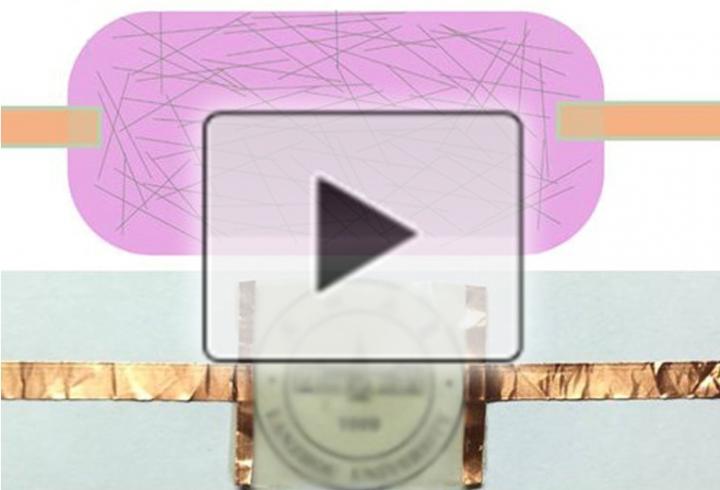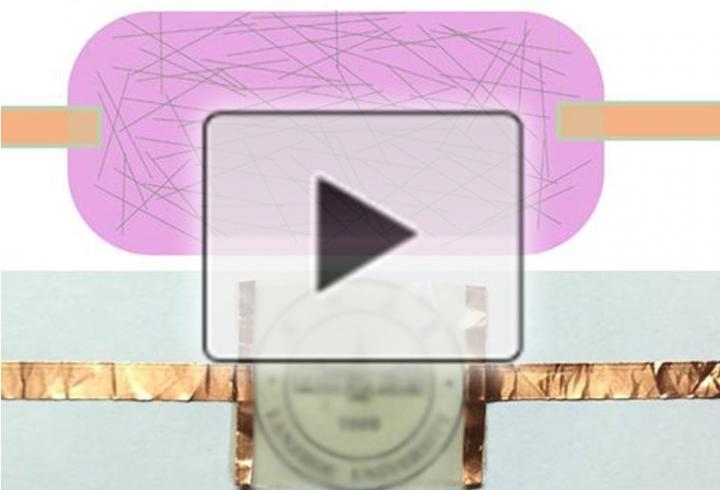
Credit: American Chemical Society
To soothe aches and pains, many people turn to heating pads, patches or creams. Although a common practice, thermotherapy can cause burns. Now researchers are developing a transparent heating pad that allows users to see through it to monitor their skin's color and prevent such injuries. They report their approach in the journal ACS Applied Materials & Interfaces.
Thermotherapy pads help treat a range of conditions including rheumatoid arthritis. But they've been known to cause burns, particularly among people who fall asleep with their heating pads on or among the elderly or others who might not be very sensitive to heat. Part of the problem is that commercial heating pads are opaque, and users can't see how their skin is reacting to the therapy. Other researchers have developed transparent alternatives, but they were ultimately too stiff, costly or brittle. Wei Lan and colleagues wanted to address this problem by developing a flexible, see-through device.
To make their thermotherapy pad, the researchers embedded conductive silver nanowires in a thin polyvinyl alcohol film. They then enveloped the film and a copper electrode in biocompatible polydimethylsiloxane, a type of silicone, to insulate the heating element and protect a user's skin. Testing showed that the transparent device heated quickly when 3 volts were applied, which is the typical voltage of coin-cell batteries used in watches, remotes and other small electronics. It was also very flexible and worked well even after being bent 10,000 times.
###
The authors acknowledge funding from the Natural Science Foundation of Gansu Province, the State Key Laboratory of Advanced Processing and Recycling of Non-ferrous Metals, Lanzhou University of Technology and the Scientific Research Foundation for the Returned Overseas Chinese Scholars, State Education Ministry.
See how the heating pad works in this Headline Science video.
The abstract that accompanies this study is available here.
The American Chemical Society is a nonprofit organization chartered by the U.S. Congress. With nearly 157,000 members, ACS is the world's largest scientific society and a global leader in providing access to chemistry-related research through its multiple databases, peer-reviewed journals and scientific conferences. ACS does not conduct research, but publishes and publicizes peer-reviewed scientific studies. Its main offices are in Washington, D.C., and Columbus, Ohio.
To automatically receive news releases from the American Chemical Society, contact [email protected].
Follow us on Twitter | Facebook
Media Contact
Katie Cottingham
[email protected]
301-775-8455
@ACSpressroom
http://www.acs.org
############
Story Source: Materials provided by Scienmag





